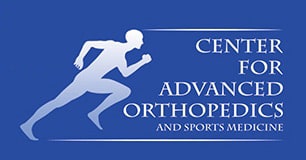Hand, Wrist and Elbow
Carpal & Cubital Tunnel Syndrome
Carpal tunnel syndrome is a common condition where the Median nerve is pinched in the wrist. Cubital tunnel syndrome is where the Ulnar nerve is pinched in the elbow. Both conditions are commonly treated with a minor procedure to relieve pressure off of the nerves to allow them to heal completely and normal function to return.
Our surgeons use minimally invasive techniques to get you back to activities you enjoy quickly and with minimal downtime.
Wrist Arthroscopy
Arthroscopy is a minimally invasive surgical procedure that can be used both to diagnose and treat a wide range of conditions that affect joints. In the wrist, arthroscopy is used to treat ligaments, tendons and other types of tissue that become damaged as a result of degeneration, trauma, or disease.
Wrist pain is a common problem with many possible causes. Sometimes it results from a sprain or fracture due to a fall or other injury, while in other cases it stems from conditions such as arthritis or carpal tunnel syndrome. It is essential, therefore, to obtain the proper diagnosis in order to treat it correctly and effectively.
The Wrist Arthroscopy Procedure
During the wrist arthroscopy procedure, the wrist is stabilized by being placed on a separate operating table from the one the patient is on. Several tiny incisions are made in the wrist and a thin tube, called an arthroscope, is inserted into the treatment area. The arthroscope is connected to a camera that displays images of the wrist’s internal structure on a computer screen, allowing the surgeon to precisely identify and target joint abnormalities.
Depending upon what is found, the surgeon, using special small surgical tools, may be able to treat the condition immediately. Reasons for wrist arthroscopy include removing scarred or inflamed tissue, repairing fractures, removing ganglion cysts, and repairing torn ligaments or tendons.
Recovery From Arthroscopic Wrist Surgery
After surgery, the wrist is elevated and bandaged for several days in order to reduce the risk of pain and swelling, and promote proper healing. Patients who undergo arthroscopy experience significantly less bleeding and scarring, and have shorter recovery times, than patients who undergo traditional open surgery.
Elbow Arthroscopy
Arthroscopy is a type of surgery that uses an arthroscope, a thin fiber optic camera, to visualize an internal area and confirm a diagnosis. If damage or abnormalities are detected during the arthroscopy, repairs can often be made during the same procedure. Arthroscopy is considered an ideal treatment option for many conditions, since it offers smaller incisions, shorter recovery times and less scarring than traditional open surgery. Patients can often return home the same day as their procedure and resume their regular activities in just a few weeks, while experiencing less pain, greater range of motion and restored joint function.
Elbow arthroscopy is generally used for simple manipulations of the joint, such as fracture care, debridement and removal of bone fragments. It is also commonly used to confirm and examine abnormalities of the joint to provide a proper diagnosis of any elbow conditions.
The Elbow Arthroscopy Procedure
During the elbow arthroscopy procedure, the surgeon makes a small incision near the affected area of the elbow and inserts an arthroscope, a long flexible tube with a camera and a tiny light on the end. This device displays magnified images of the inside of the elbow joint on a video monitor for the surgeon to view in real time. During this diagnostic part of the procedure, the elbow is examined for any signs of tearing, damage or degeneration to the ligaments, cartilage and other internal structures.
If damage is detected, it can often be repaired during the same procedure by creating a few more small incisions through which tiny surgical instruments are inserted. These instruments allow the surgeon to replace damaged cartilage, join together torn ends, remove loose tissue or realign the joint to minimize pain and inflammation. Once the repair has been performed, the tools and arthroscope are removed and the incisions are sutured closed. A dressing will be applied to the area, which will later be replaced with smaller bandages as the incisions heal.
Recovery From Arthroscopic Elbow Surgery
To reduce the risk of swelling, the elbow is elevated and ice is applied intermittently for 48 hours after the initial surgery. In most cases, the arm will be put into a splint for several days. As healing begins, a physical therapy program will help the individual to regain strength, flexibility and range of motion. Depending on the type of repair that was performed, recovery times may vary, but most patients fully recover from elbow arthroscopy within several months.
While arthroscopy offers many advantages over conventional elbow surgery, it may not be appropriate for all patients, especially those with conditions affecting hard-to-visualize areas. In such cases, traditional surgery may be more appropriate.
Risks Of Elbow Arthroscopy
While elbow arthroscopy is considered safer and more efficient than conventional elbow procedures, there are still certain risks associated with any type of surgery. Some of these risks may include:
- Infection
- Reaction to anesthesia
- Nerve or blood vessel damage
- Tissue damage
- Prolonged pain
- Blood clots
Patients should discuss these and other risks with their doctor before undergoing elbow arthroscopy.



